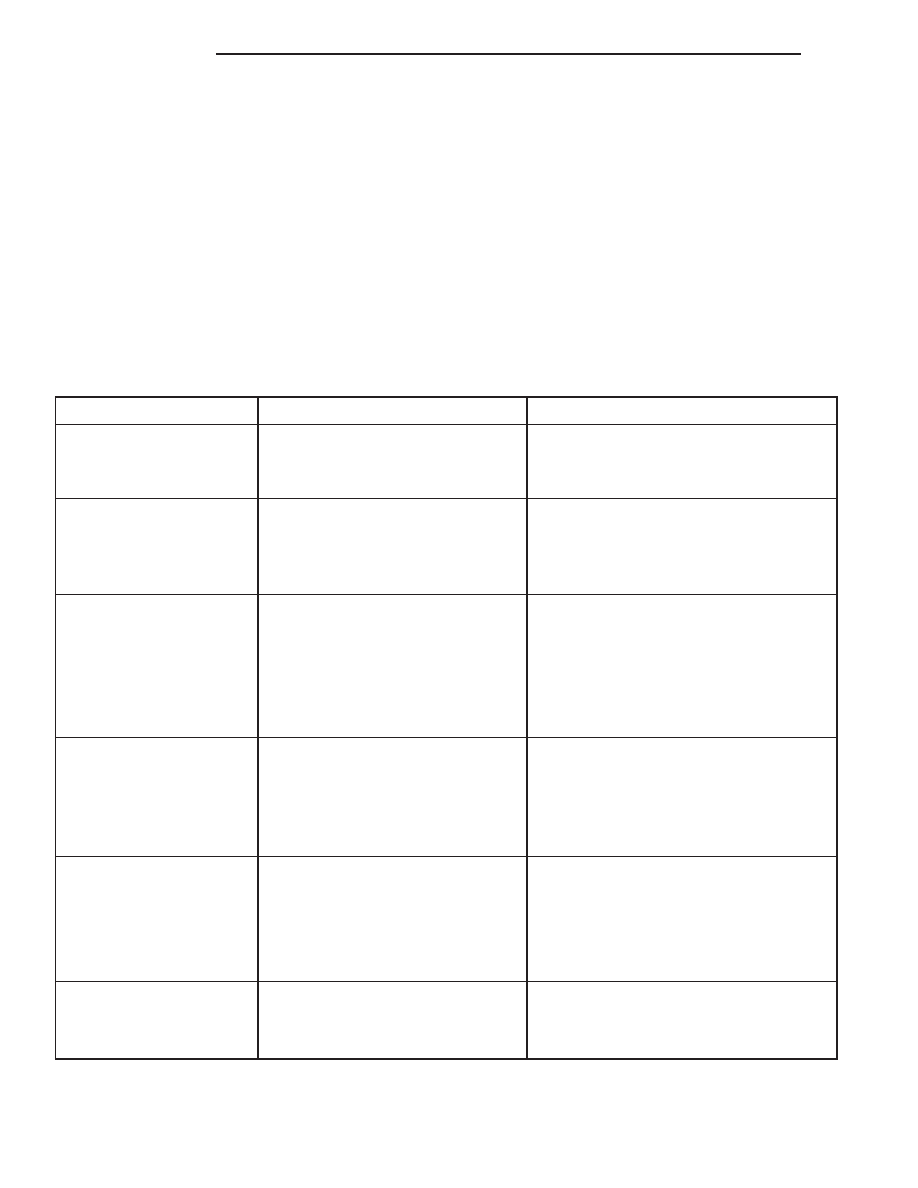Jeep Grand Cherokee WJ. Manual - part 10

HUB/BEARING
DESCRIPTION
The bearing used on the front hub of this vehicle is
the combined hub and bearing unit type assembly.
This unit assembly combines the front wheel mount-
ing hub (flange) and the front wheel bearing into a
one piece unit. The wheel mounting studs are the
only
replaceable
component
of
the
hub/bearing
assembly.
OPERATION
The hub/bearing assembly is mounted to the steer-
ing knuckle and is retained by three mounting bolts
accessible from the back of the steering knuckle. The
hub/bearing unit is not serviceable and must be
replaced as an assembly if the bearing or the hub is
determined to be defective.
DIAGNOSIS AND TESTING
SUSPENSION AND STEERING SYSTEM
CONDITION
POSSIBLE CAUSES
CORRECTION
FRONT END NOISE
1. Loose or worn wheel bearings.
1. Adjust or replace wheel bearings.
2. Loose or worn steering or
suspension components.
2. Tighten or replace components as
necessary.
EXCESSIVE PLAY IN
STEERING
1. Loose or worn wheel bearings.
1. Adjust or replace wheel bearings.
2. Loose or worn steering or
suspension components.
2. Tighten or replace components as
necessary.
3. Loose or worn steering gear.
3. Adjust or replace steering gear.
FRONT WHEELS SHIMMY
1. Loose or worn wheel bearings.
1. Adjust or replace wheel bearings.
2. Loose or worn steering or
suspension components.
2. Tighten or replace components as
necessary.
3. Tires worn or out of balance.
3. Replace or balance tires.
4. Alignment.
4. Align vehicle to specifications.
5. Leaking steering dampener.
5. Replace steering dampener.
VEHICLE INSTABILITY
1. Loose or worn wheel bearings.
1. Adjust or replace wheel bearings.
2. Loose or worn steering or
suspension components.
2. Tighten or replace components as
necessary.
3. Tire pressure.
3. Adjust tire pressure.
4. Alignment.
4. Align vehicle to specifications.
EXCESSIVE STEERING
EFFORT
1. Loose or worn steering gear.
1. Adjust or replace steering gear.
2. Power steering fluid low.
2. Add fluid and repair leak.
3. Column coupler binding.
3. Replace coupler.
4. Tire pressure.
4. Adjust tire pressure.
5. Alignment.
5. Align vehicle to specifications.
VEHICLE PULLS TO ONE
SIDE DURING BRAKING
1. Uneven tire pressure.
1. Adjust tire pressure.
2. Worn brake components.
2. Repair brakes as necessary.
3. Air in brake line.
3. Repair as necessary.
2 - 8
SUSPENSION
WJ
DESCRIPTION AND OPERATION (Continued)